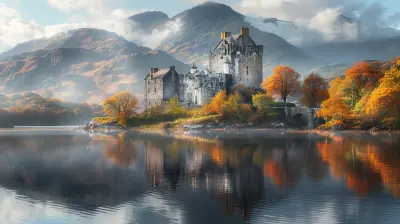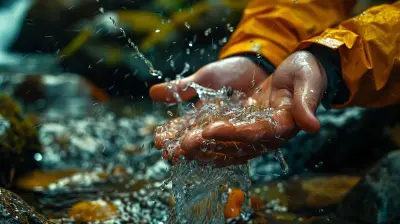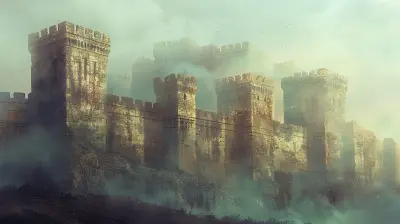Photography Secrets for Capturing Dramatic Waterfall Shots
12 June 2025
Have you ever stood in front of a roaring waterfall, completely mesmerized by its power and beauty, only to find that your photos don't even come close to doing it justice? You're not alone. Capturing the drama and emotion of a waterfall shot can feel like trying to bottle a thunderstorm—it’s wild, energizing, and constantly in motion.
But fear not, fellow shutterbug. If you’ve been struggling to translate the thunderous magic of waterfalls into your photos, you’re in the right place. In this guide, we’ll uncover the best-kept secrets of waterfall photography that can turn your ordinary snapshots into jaw-dropping masterpieces. It’s not just about gear—it’s about vision, timing, and a sprinkle of patience.
So grab your camera and your hiking boots. Let’s dive into the misty world of waterfall photography and uncover the hidden tricks that the pros won’t tell you.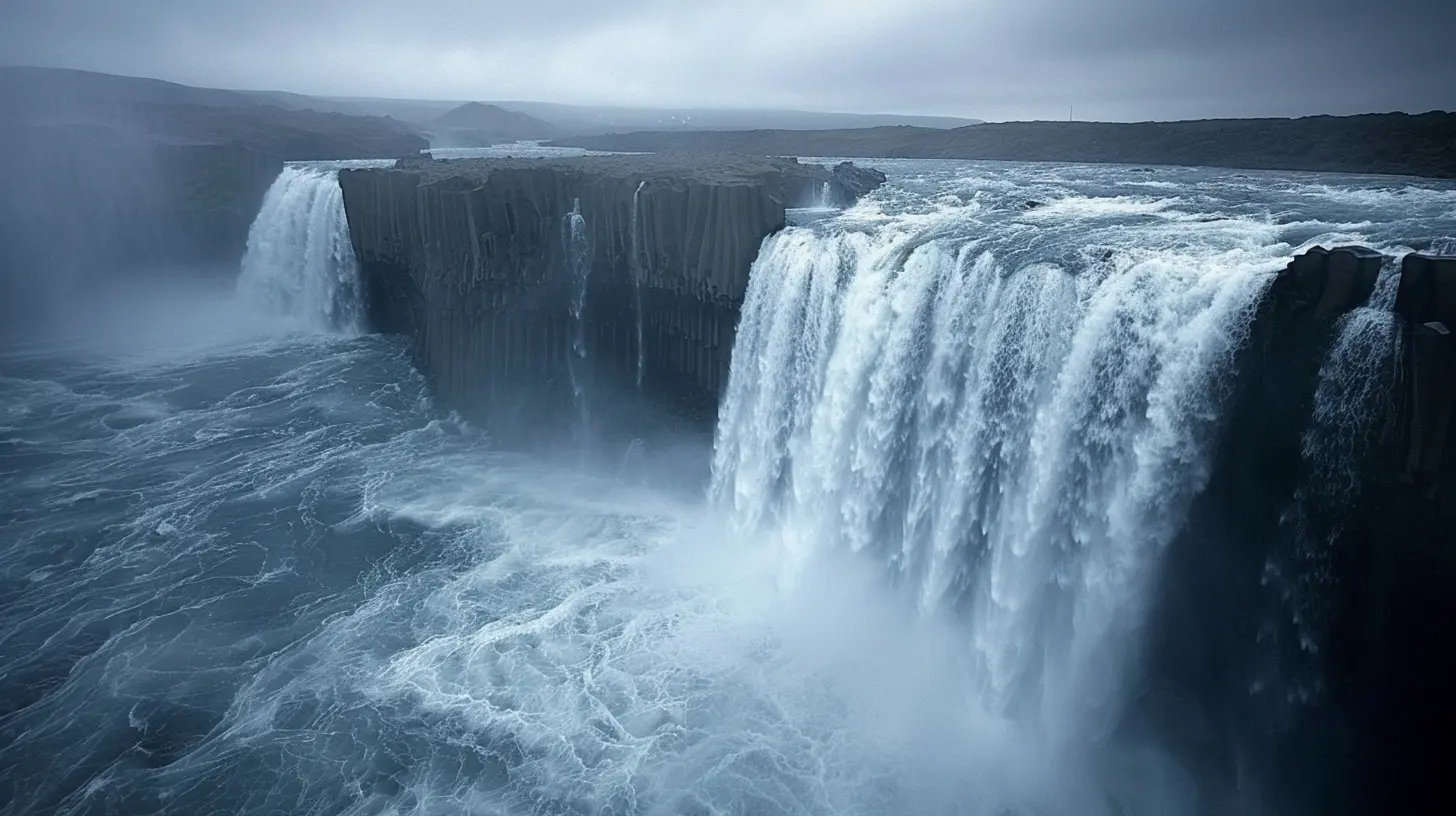
Table of Contents
- Why Waterfalls Are Tricky Yet Rewarding Subjects- Secret #1: Timing Is Everything
- Secret #2: You Gotta Think Like Water
- Secret #3: Use a Tripod—Seriously
- Secret #4: Master the Long Exposure Game
- Secret #5: Filters Are Your Best Friend
- Secret #6: Composition Can Make or Break the Shot
- Secret #7: Don’t Be Afraid to Get Wet
- Secret #8: Play With Shutter Speeds
- Secret #9: Post-Processing Like a Wizard
- Secret #10: Know the Story You Want to Tell
- Bonus Tips: Insider Tricks You Didn’t Know You Needed
- Final Thoughts
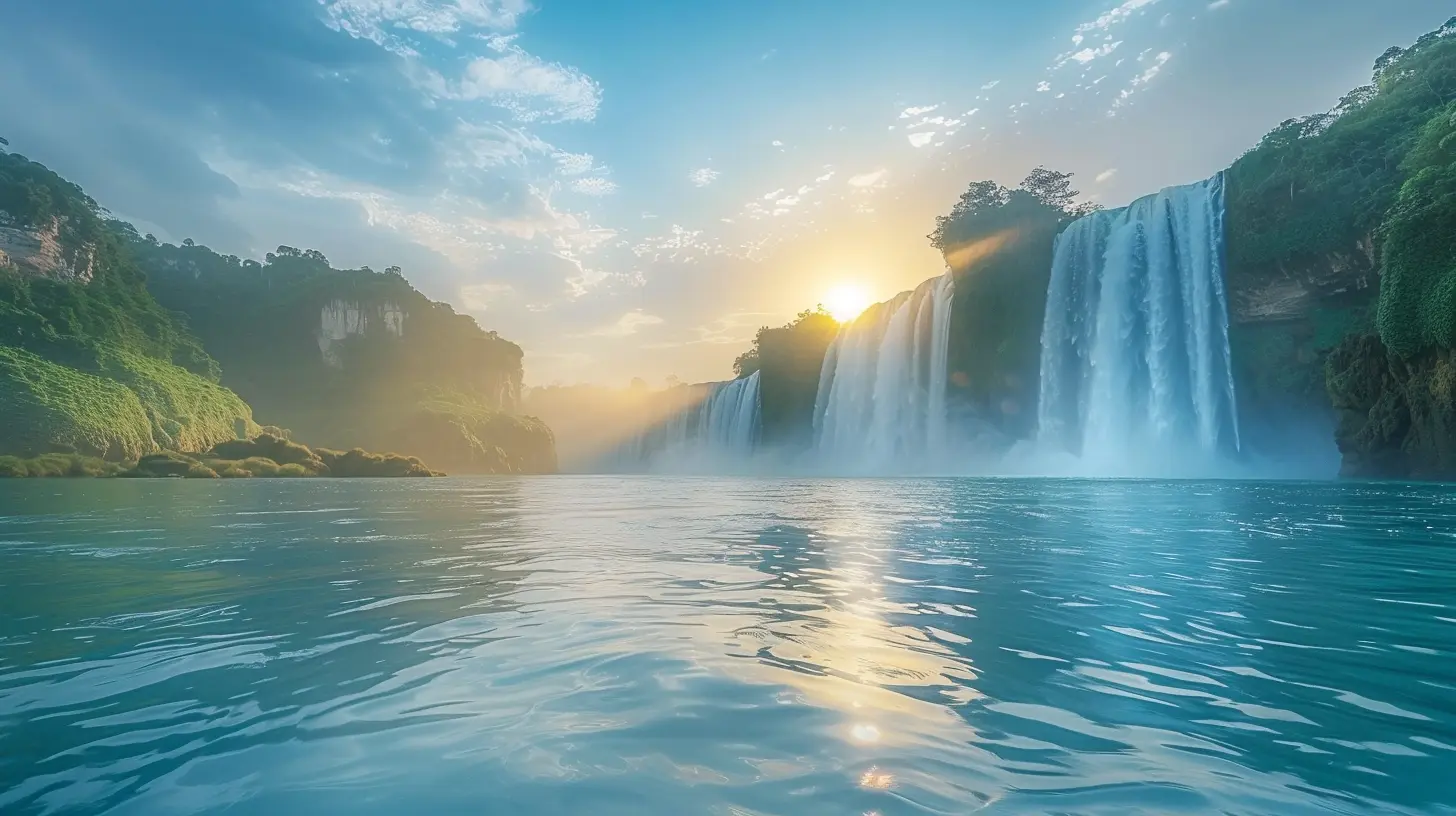
Why Waterfalls Are Tricky Yet Rewarding Subjects
Let’s get one thing straight—waterfalls aren’t easy. They’re always moving, usually buried deep in uneven terrain, surrounded by mist, reflections, shadows, and unpredictable light.But that’s what makes them so rewarding.
Shooting waterfalls is a bit like trying to write poetry in a thunderstorm. You’re battling the elements, playing with light, and hoping to capture raw emotion in a single frame. When you get it right, though? Pure magic.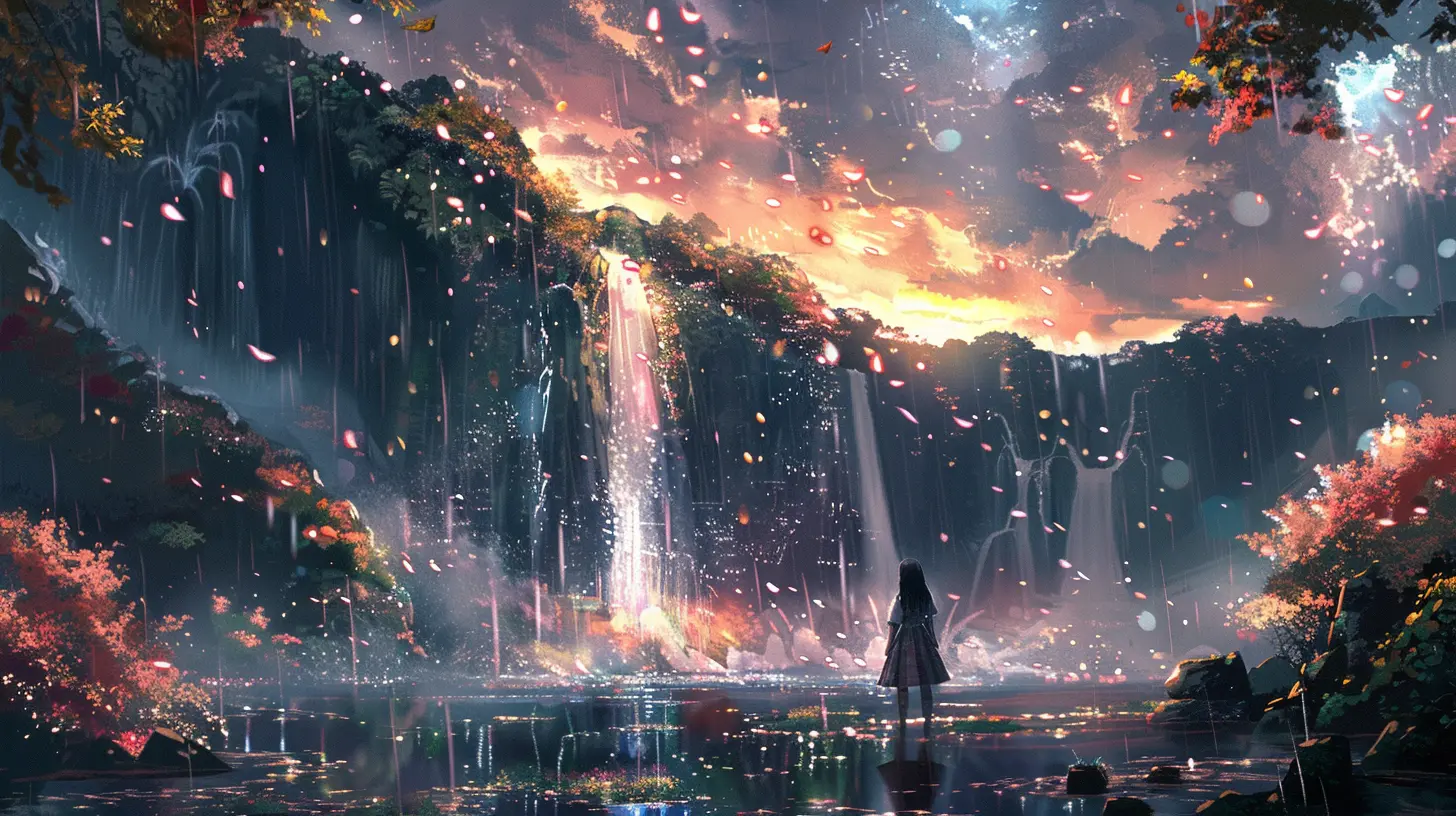
Secret #1: Timing Is Everything
Ever heard the phrase, “light is the lifeblood of photography”? Well, with waterfalls, it’s your best friend—or worst enemy.Early Morning or Late Afternoon
Golden hours. They’re your secret weapon. The soft light during sunrise and sunset adds a warm glow, creating more depth and emotion in your shot. Midday sun? Not so much. It tends to wash everything out.Cloudy Days Are Gold
This might sound weird, but overcast skies are actually a blessing. They give you an even, diffused light that cuts down on harsh shadows and blown highlights—a dream for capturing all that beautifully flowing water detail.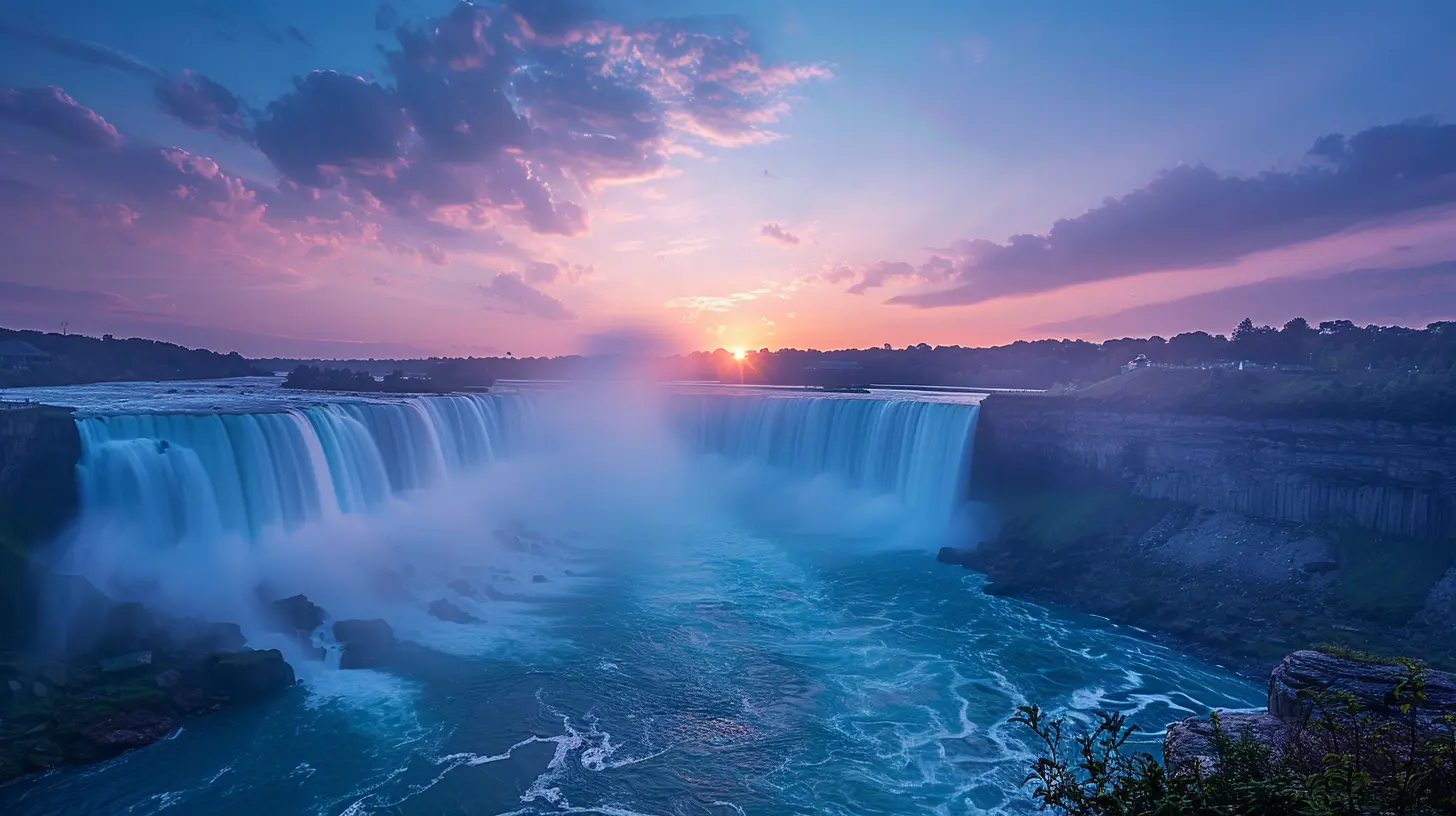
Secret #2: You Gotta Think Like Water
What does that even mean? Well, water doesn’t move in a straight line. It dances, twirls, crashes, and slides.You need to predict its movement. Watch it for a minute. Is it slamming down in a massive fall or gently trickling over mossy rocks? This helps you decide how to shoot it—fast shutter for drama, slow shutter for serenity.
Secret #3: Use a Tripod—Seriously
You might hate lugging it around, but trust me, a tripod is non-negotiable for dramatic waterfall shots.Why?
Because if you're messing with long exposures (and you should be), even the tiniest hand tremor can turn your masterpiece into a blurry mess.
Pro tip? Get a sturdy one that can withstand wet ground and maybe even a little splash.
Secret #4: Master the Long Exposure Game
Want that dreamy, silky water effect? The kind where water looks like it’s blowing in the wind like silk curtains? That’s long exposure magic.Start with These Settings:
- ISO: Keep it low (100–200)- Aperture: f/8 to f/16 for sharp depth of field
- Shutter Speed: Start with 1-2 seconds, then experiment
You’ll find that sweet spot where the water becomes art.
Secret #5: Filters Are Your Best Friend
No filter? No drama.Neutral Density (ND) Filters
These babies act like sunglasses for your lens. They cut down the amount of light, letting you use slower shutter speeds even in brighter light.ND 4, ND 8, or even ND 64—choose your weapon depending on the light.
Polarizing Filters
Want to cut through glare on water and make those greens pop? A circular polarizer will do the trick.Bonus: It also makes skies richer and clouds more dramatic. Win-win.
Secret #6: Composition Can Make or Break the Shot
Even with perfect settings, a poorly composed photo is... well, just meh.Here are some battle-tested tricks:
The Rule of Thirds
Place the waterfall or its main feature at one-third of the frame rather than dead center. It adds tension and balance.Leading Lines
Use rocks, logs, or the river stream to lead the viewer’s eye right into the heart of the waterfall.Frame Within a Frame
Use overhanging branches, caves, or rock formations to add depth.Secret #7: Don’t Be Afraid to Get Wet
Think like an adventurer. Sometimes the best angle is halfway in the stream or crouched behind a wet boulder. Bring waterproof boots, a rain jacket, and a lens cloth. Better yet, carry a mini-towel to wipe off your camera gear.Waterfall mist is relentless—and sneaky.
Secret #8: Play With Shutter Speeds
Not all waterfalls want to be silky smooth.Fast Shutter = Action Shot
Shoot waterfalls at 1/500 or higher if you want to freeze the water mid-fall. It gives a completely different, high-energy feel.Slow Shutter = Dreamy Drama
We all love that ethereal, mystical foggy vibe. That's usually shot anywhere from 1/4 of a second to 30 seconds.Try both. One scene, two moods.
Secret #9: Post-Processing Like a Wizard
Let’s be real. Even the best shots benefit from a little digital magic.Lightroom & Photoshop Tweaks:
- Adjust highlights and shadows to add more depth- Increase contrast just a bit to make textures pop
- Use selective clarity on water to emphasize movement
- Add a tiny bit of vignette to focus on the falls
But remember—less is more. We’re enhancing nature, not painting over it.
Secret #10: Know the Story You Want to Tell
Every waterfall has a personality.Is it wild and chaotic? Is it soft and romantic? Do you want to show its scale or intimacy?
Think about the feeling you want the viewer to get. That emotional anchor will guide your composition, settings, and even post-processing.
Bonus Tips: Insider Tricks You Didn’t Know You Needed
- Bring a Microfiber Cloth: Mist kills images. Keep your lens clean.- Shoot in RAW: You’ll thank yourself later when editing.
- Scout Locations First: Use apps like PhotoPills or The Photographer’s Ephemeris.
- Safety First: Wet rocks are ice-rink slippery. Don’t risk your gear—or your limbs.
- Vertical Shots Work Wonders: Especially for tall falls, don’t limit yourself to horizontal frames.
Final Thoughts
Waterfall photography isn’t just about capturing a landscape—it’s about capturing _emotion_. The fury of falling water, the whispers of forest mist, the light dancing through droplets—it’s all poetry in motion.Let your shots speak that poetry.
Take your time. Experiment. Get soaked. And most importantly, have fun with it.
Because let’s face it—you’re not just taking pictures. You’re chasing magic.
all images in this post were generated using AI tools
Category:
WaterfallsAuthor:

Kelly Hall
Discussion
rate this article
2 comments
Dash McCarthy
“Dramatic shots? Please! Mastering the art of water photography is less about secrets and more about dodging tourists. Get your angles right, and remember: patience is key—waterfalls aren’t going anywhere!”
June 21, 2025 at 2:34 AM

Kelly Hall
Absolutely! Patience and the right angles can truly elevate your waterfall photography, making it both an art and an adventure.
Celine McHugh
Mastering waterfall photography requires proper lighting, composition techniques, and patience. Experiment with shutter speeds to enhance the water's movement and texture.
June 16, 2025 at 4:13 AM

Kelly Hall
Absolutely! Mastering the right techniques and being patient are key to capturing stunning waterfall shots. Experimenting with shutter speeds truly helps bring out the beauty of the water's movement. Thank you for the insightful comment!
